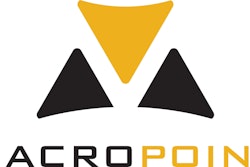
External procurement spending is the single largest cost element for most companies and a crucial component of their value chains. But, many companies are failing to realize the powerful benefits that procurement can bring, according to a new study by A.T. Kearney.
Procurement spending, if conducted thoughtfully and analytically, represents a company's biggest opportunity to improve the bottom line and ultimately transform overall business performance. Recent shifts in the perception of procurement by CFOs and other C-suite executives are overdue and welcome, but still more than half of CFOs surveyed think of procurement as a transactional function that is primarily useful for negotiating hard cost savings, according to the study.
Realizing the Power of Procurement, the 2019 iteration of A.T. Kearney's long-standing Assessment of Excellence in Procurement (AEP) series of benchmarking research studies, examines the supply management practices of 153 companies in a broad range of industries and geographies. In addition to procurement executives, A.T. Kearney solicited input from other C-suite executives and stakeholders regarding the procurement function's value to business performance.
To help those outside of procurement understand the function's contribution to business, A.T. Kearney has developed a simple ROI calculation called the Return on Supply Management Asset (ROSMASM) score. High-performing procurement organizations achieved ROSMA scores two to three times higher than companies in the second and third quartiles – and 10 times higher than those companies in the bottom quartile. For this bottom quartile, procurement is, at best, breaking even in terms of results achieved versus the company's investment in procurement people, processes and technology.
"A high-performing procurement function can help a company achieve its broader enterprise goals," notes Yves Thill, an A.T. Kearney partner who lead the 10th AEP survey. "Cost reduction is just the tip of the spear; we increasingly see procurement play a leading role in driving benefits beyond cost – e.g., tapping into supplier-led innovation to support growth, extending sustainability and corporate social responsibility goals across the entire value chain, improving operating efficiencies with strategic suppliers, minimizing supply risk and impacting quantity reduction."
A.T. Kearney's analysis of the study data found that state-of-the-art procurement organizations excel in three areas: teaming, managing categories and managing suppliers.
- Team excellence: Procurement executives at leading companies act as strategic business partners by maintaining strong credibility and visibility within the enterprise. They work collaboratively with business units to go beyond cost reduction by evaluating trends and identifying new drivers of value. Importantly, these executives are starting to invest in digital tools to improve the efficiency and effectiveness of working with their supply base.
- Category excellence: Leading companies have robust, long-term category strategies in place. They embed analytics to assess and monitor key cost drivers and employ advanced strategic sourcing levers.
- Supplier excellence: Best-in-class companies have a defined supplier relationship management process and team accountability structure that allow the full supplier life cycle to be monetized. They have multiyear, robust collaborative processes in place with strategic suppliers for innovation and risk management, and proactively manage their supply base to ensure they have the right number of suppliers with the right capabilities. Finally, they assess supply risk and deploy systematic risk management strategies.



















